What Is Beamforming And How Does It Give You Faster Wi-Fi?
We All Want To Access The Wi-Fi Network In Every Corner Of Our Home And Workplace And Receive Internet With Good Quality.
Beamforming technology can set the best conditions to provide stronger waves to a specific location. In addition to better power management, higher speed and higher quality can be obtained by connecting to Wi-Fi networks.
As you know, Wi-Fi signal strength decreases according to the distance you are from the router. In this way, there are probably places in the home or workplace that can connect to the Wi-Fi network does not exist in them.
Beamforming technology (Beamforming) is a solution to increase the strength and quality of Wi-Fi and provides users with a solution to this problem. Stay with Hardware City in this article to learn about Beam Forming technology and its practical features.
What is Beamforming, and why do we need this technology?
Before examining the beamforming technology and its benefits, we must deal with how Wi-Fi routers transmit information. Let’s get to know what is available in the market.
Wi-Fi router uses radio waves to transmit data. A router from several separate antennas creates and sends radio waves to the user’s device. These antennas can be hidden inside the router or installed quite openly in different directions from the router.
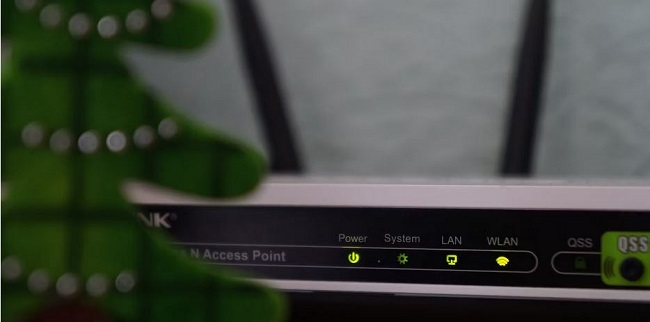
Router antennas often radiate waves equally in all directions, scattering radio waves like a rock hitting water’s surface. The waves generated by the router enable you to connect via Wi-Fi Connect to the Internet. However, the further you are from the router, the weaker the signal.
Reducing the power of radio waves causes the speed of the Internet (network) to decrease in some parts of the home or workplace environment.
This is precisely where we need beamforming technology to solve this problem by adequately managing wave propagation.

Wi-Fi routers that do not support beamforming technology send waves equally in all directions. Instead of sending waves in all orders, Beam Forming technology focuses them on your devices.
Since, in this method, the waves are not distributed equally in all charges, the power of the waves is improved at the place of use, and the speed of receiving and transmitting data increases.
How does beamforming technology work?
As mentioned in the previous section of the article, the router uses its antennas to create radio waves. Often, router antennas can spread energy evenly. Therefore, routers use the concept of wave interference to create directional beams.
In simple words, interference refers to the change in the amplitude of waves when two or more waves collide with each other. The change in the amplitude of the waves can be positive or negative according to the phase difference of the waves. When the waves collide, two areas with high signal strength and another with low signal strength are created.
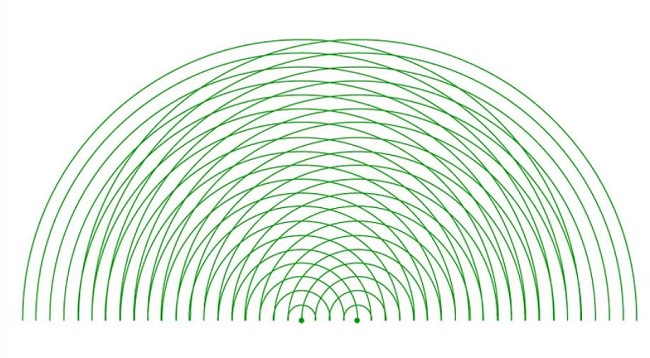
When the router intends to send radio waves to the destination, it sends the waves with a time difference or, in other words, with a phase difference in each antenna. The difference in time and phase causes the waves to focus on the destination, increasing their power. The change in the control of the waves enables the use of beamforming technology.
At this point, you may ask how the router knows the location of each target device or other devices connected to it. To answer this question, we first examine the types of beamforming technology.
Types of Beamforming
The previous section shows how the Wi-Fi router creates and transmits radio waves. Now, it’s time to consider how the router determines the location of the equipment connected to it for tuning. Two methods are provided for this purpose, which you will get to know below.
Explicit Beamforming
In this method of Beamforming technology, the router communicates with the connected device to determine its location in space. Therefore, to use the Explicit Beamforming method, the router and the device connected to it (both) must support this feature. If the router or the device connected to it does not support this feature, it will be impossible to send beamforming data, and this feature will be disabled.

This method sends packets containing beamforming data to the device connected to the router. The device connected to the router uses this data to create a steering matrix) uses. The data is then sent to the router to generate radio waves using the concept of interference.
Implicit Beamforming
Unlike the Explicit Beamforming method, the router and the device must support this feature, even if the equipment connected to the router has the Implicit Beamforming feature.
It is also possible to use this technology even if they do not support it. In this method, the router sends beamforming packets to the connected device, but unlike the previous process, the routing matrix will not be created. Instead, the router tries to determine the signal pattern that reaches the device using Acknowledgment Frames technology. (identification frames) to specify.
Every time the device is connected to the Wi-Fi network, it receives data packets by sending Acknowledgment Packets and notifying the router that it has received the data. Also, if the user’s device does not receive data, it asks the router to resend it.
Based on the sent requests, the router can guess the location of the device, and then, by changing the radio waves, it tries to improve the quality of the Wi-Fi connection. To improve.
Since the exact location of the device connected to the router is calculated using the Explicit Beamforming method, this method has a higher efficiency than Implicit Beamforming. On the contrary, to implement the Implicit Beamforming method, there is no need to support this technology; it is possible to use it more widely.
Introduction to MIMOAnd MU-MIMO
As you know, Beam Forming technology improves the power of radio waves that reach the device connected to the router and increases the quality of the Wi-Fi connection. It also helps. The ability to use the MIMO feature is also provided by beamforming technology that simultaneously enables the router to stream data .) to your device.
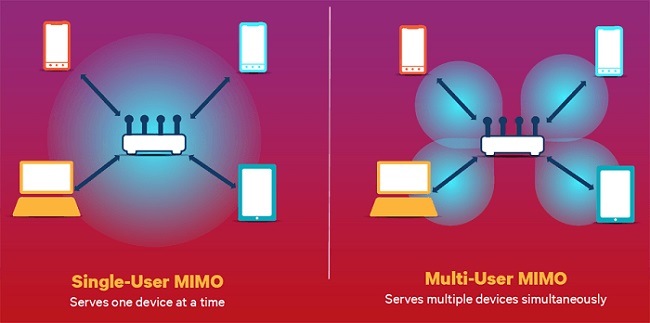
Since, in this method, data packets are sent on directional waves ( Omnidirectional Waves).) are sent, it is not possible to use this technology on ordinary routers. On the contrary, in routers that support beamforming technology, it is possible to send data streams using radio waves.
The technology of simultaneous transmission of the data stream provides the possibility of sending a larger volume of data to the receiver with higher reliability and efficiency. Also, by using this technology, the data transfer rate increases.
MU-MIMO featureWhat is?
Beamforming and MIMO technology: Wi-Fi network power and efficiency significantly improved, but despite the mentioned achievements, the Wi-Fi network cannot simultaneously send data to multiple devices. MU-MIMOIt provides the possibility of transferring data to several devices at the same time.
In addition, the time to receive data packets to each device is reduced, and the network throughput is also improved.
MU-MIMO technology’s advantages are visible only when the data is sent from the router to the device connected. However, in the Wi-Fi 6 protocol, attempts have been made to use this technology in both directions.
Wi-Fi network: What standards does it support?
Understanding Wi-Fi network capabilities is difficult for regular users despite the numerous protocols and technological advancements in this area. A wide range of technical terms related to Wi-FiThere. In this section, we briefly discuss the technologies supported by different Wi-Fi network protocols examined:
- protocols802.11a/b/g: These protocols do not support beamforming technology. So, if you have a router that only uses these protocols and you’re struggling with signal drop issues on your network, you might want to consider buying a router that supports newer protocols.
- protocol802.21n: Beamforming and MIMO technology has been introduced for the first time in protocol802.21n. This protocol allows implementing both beamforming methods, namely Explicit Beamforming و Implicit Beamformingprovides. Most manufacturers of routers that support standard Beamforming prefer to use Implicit Beamforming. For this reason, most routers that support this protocol use the Implicit Beamforming method are implemented. You should note that beamforming and MIMOOptional protocol properties802.21nand due to the computational complexity of implementing these features, most manufacturers have not implemented these features on their routers.
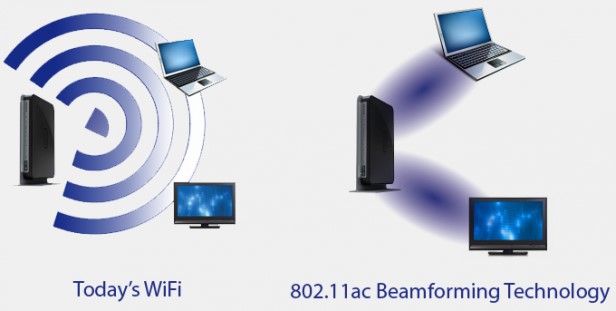
- 802.11ac Wave 1: In this protocol, only one method to implement Explicit Beamforming is defined; hence, router manufacturers do not have to enforce it differently. Therefore, the protocol802.11ac Wave 1, to expand the use of Beamforming and MIMO technology, helps.
- 802.11ac Wave 2: MU-MIMO technology has been introduced in the protocol802.11ac Wave 2.
- : Protocol802.11axwhich, which is called Wi-Fi 6also branched out; MU-MIMO technology improves so that this technology is supported when sending data from the router to the device connected to it and vice versa.
Conclusion
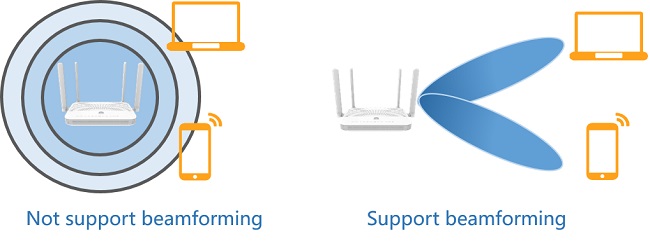
Beamforming technology enhances the power of received waves and the possibility of using technologies such as MIMOAnd MU-MIMO provides The features above to improve the speed of data transfer by the router. As a result, Wi-Fi connection users will experience faster.
You should know that beam forming technology is a magical element that allows you to access the Wi-Fi network. It is not considered a very long distance, and the effect of activating this technology can be seen at short distances, like removing blind spots at home or work.

